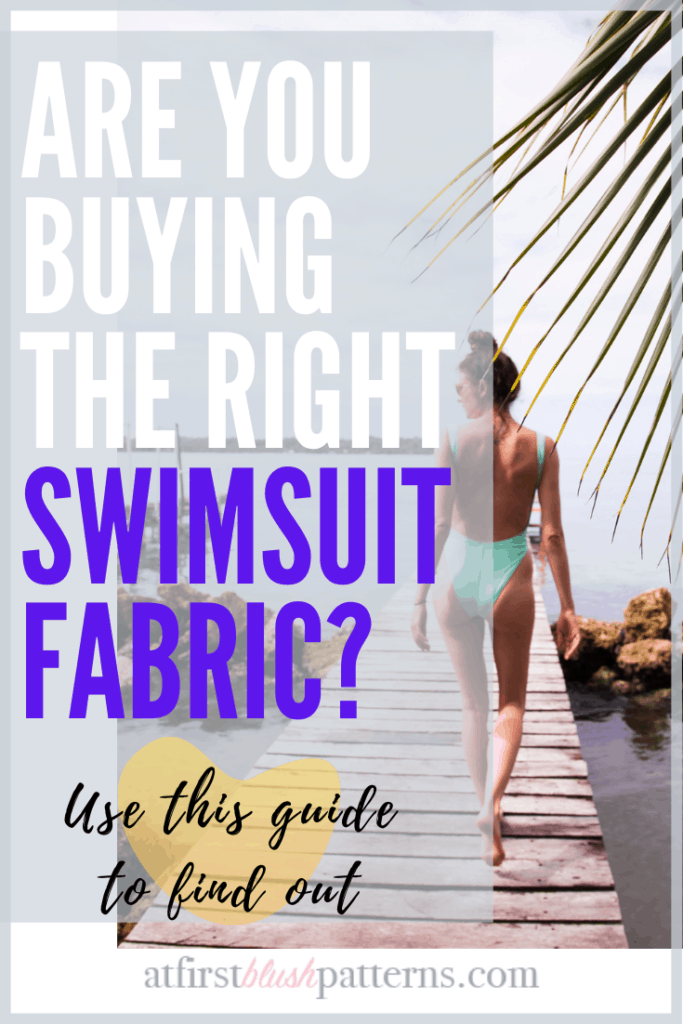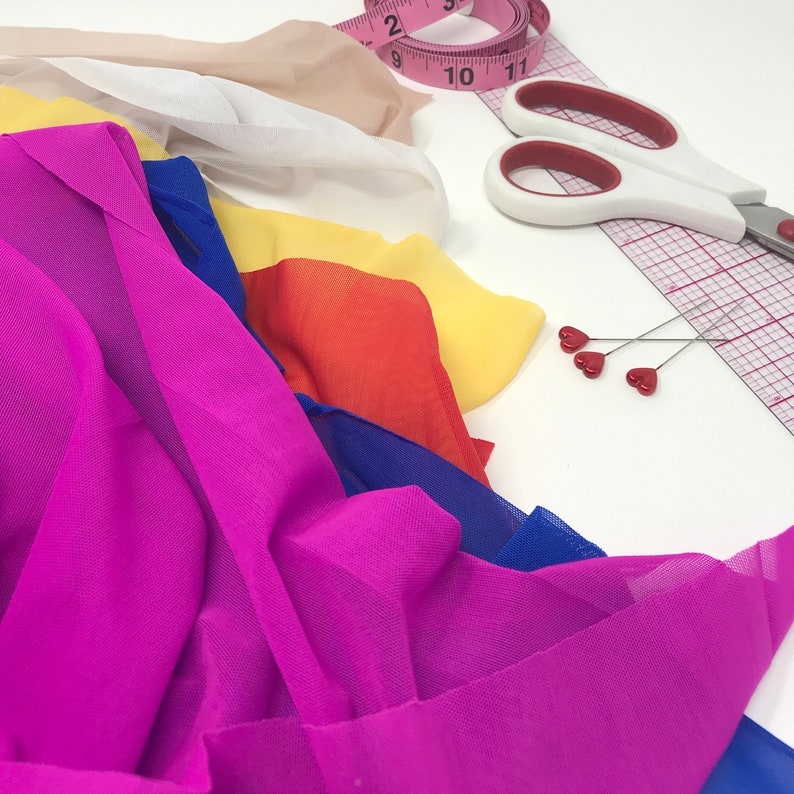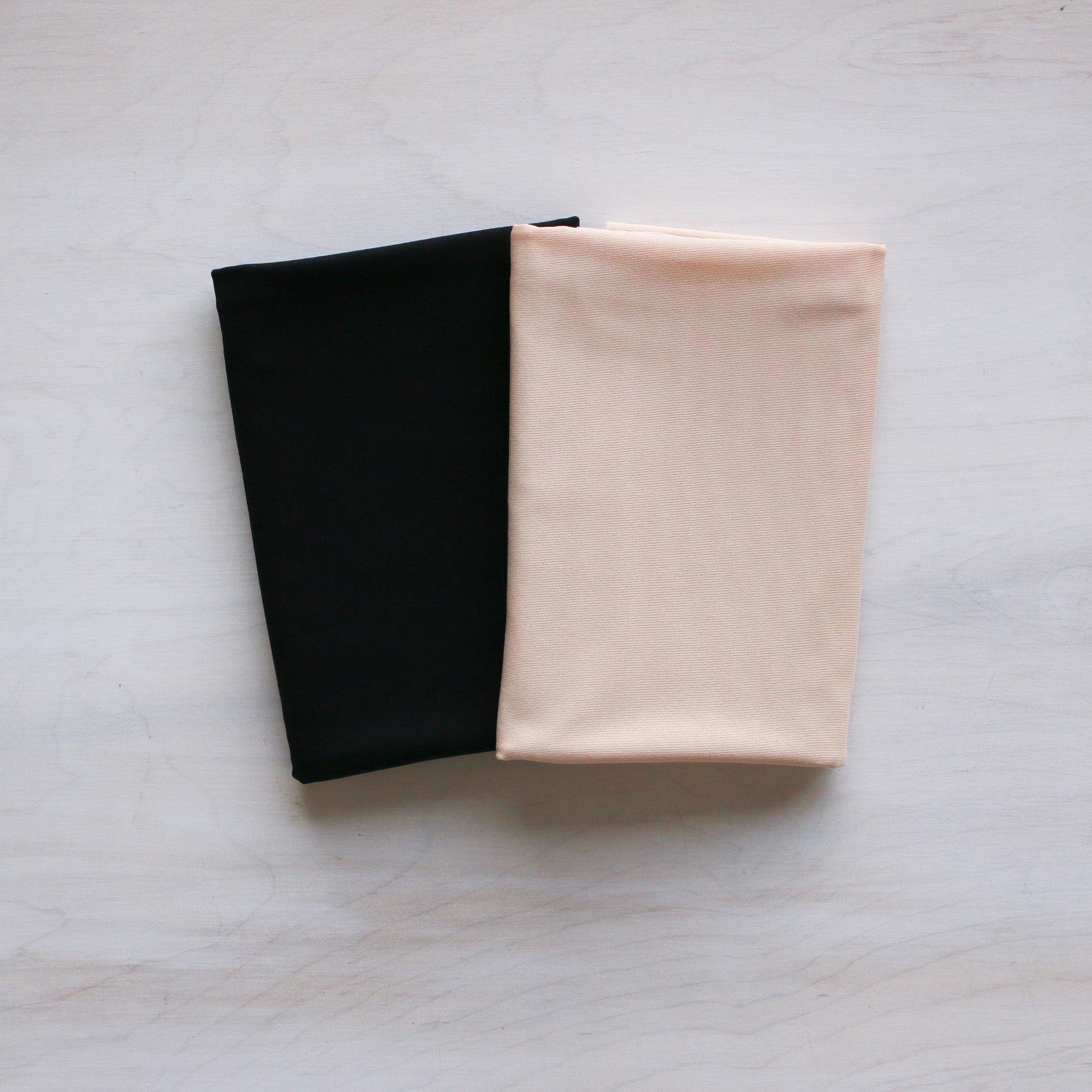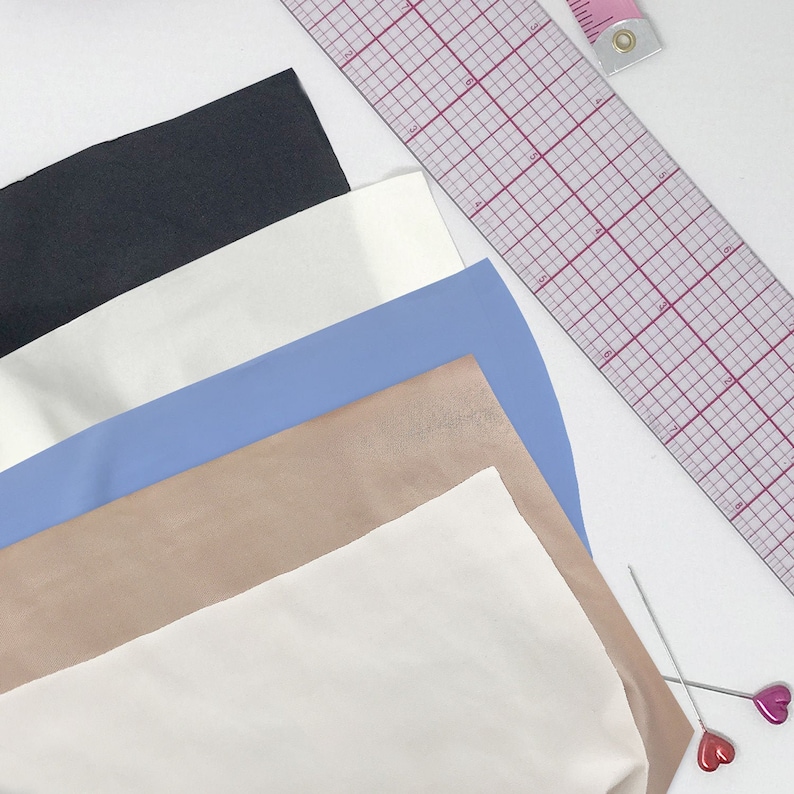It’s almost time to hit the beach or the pool and you’ve found the perfect bathing suit pattern but you’ve never sewn swimwear before. Really all you want is the most stylish fabric that will stay on your body and isn’t see-through. How do you know what is the right fabric to pick? I got you covered in this article – Best Fabrics for Sewing Swimwear. Let’s read on.
This post contains affiliate links. When you click and make a purchase from these links, we might get a commission. It doesn’t cost you anything extra!
What is the best fabric for sewing swimwear?
Main Fabrics
- Nylon Blends
- Polyester Blends
- Tricot
- Neoprene/Scuba Knit
Lining Fabrics
- Power Mesh
- Nylon
- Tricot
Swimwear fabric can be very tedious. It boils down to a few features like stretch quality, recovery, transparency and fiber content. Typically you will be looking for a spandex fabric or a related branded fabric such as Lycra or Supplex blended with a polyester fabric or nylon fabric. Let’s go over important features of a quality swimwear fabric and the types of fabric common for swimwear that are also easy for you to find in your local or online fabric store.
Common Swimwear Fabric Features Explained
Fiber Content
In order for swimwear fabric to function properly it must contain spandex or elastane*. Spandex and Elastane is the generic term for Lycra. Your ideal swimwear fabric will be a blend of a synthetic fabric such as nylon or polyester with a smaller fiber content of spandex or elastane. This type of blend is necessary because it is important for swimwear to hug the curves of the body. When the curves are hugged then the garment itself will not be distorted by water. This allows you to comfortably wear the swim garment without worry of it falling off or riding up in a way that will reveal more than you care to show.
Spandex/Elastane is typically about 10%-20% of the fiber content. The rest will be a synthetic fiber like nylon or polyester that provides comfort and ease to the wearer. This fabric should be breathable, dry easily and not distort under harsh conditions like excessive water or sun exposure.
*Note: Elastane is the term used for spandex outside of the USA.
Stretch Quality
Another important feature to swimwear fabric is the stretch quality. It is important to make sure your fabric has enough stretch to function properly for whatever water activity your swimsuit will be supporting you in. For example, if you are lounging by the pool and taking a few dips into the water during a leisure vacation then you can get away with fabric that has less stretch than if you are swimming laps or playing water sports.
Swimwear fabrics comes in two stretch ways: Two-way stretch and Four-way stretch. Two-way stretch is selvage to selvage while Four-way stretch is selvage to selvage and along the length of grain.
With this in mind and going back to the example above, you can get away with a two-way stretch fabric for leisure water activities but if you are an avid swimmer or active in water sports you will definitely need a four-way stretch fabric. The four-way stretch fabric will not only keep everything exactly where you want it but a four-way stretch one piece suit is more aerodynamic allowing more ease of movement in the water.
Recovery
Fabric recovery is one of the most important features of swimwear fabric. It goes hand in hand with the type of fiber content in your fabric and the stretch quality. When we talk about recovery what we really mean is does the fabric return to its original shape immediately after exposure to water? If you have chosen a fabric with appropriate and high quality fiber content that provides an adequate stretch quality then you should have appropriate fabric recovery. Make sure to test your fabrics by soaking them and stretching them out. How long does it take to recover? It shouldn’t take long at all.
Lining
Last but not least is swimwear lining. Your lining is just as important as your main fabric but it should be lightweight if not more lightweight depending on the weight of your main fabric. It should also have similar stretch to your main fabric. Lining will help your swimsuit keep its shape (recovery), keep your skin comfortable and is necessary if your main fabric is too transparent.
Common Swimwear Fabrics Explained
Nylon Blends
One of the most common swimwear fabrics is a nylon blend. Nylon is a synthetic fabric. Nylon blends are a blend of nylon fibers and spandex fibers (such as lycra) blended together to create this durable stretch fabric. This is a popular choice for swimwear because it has a soft hand and shiny finish. You will typically find nylon blends at 80%-90% nylon with 10%-20% elastane, Lycra or Spandex. The downside to nylon blends is that they are not the best quality when it comes to chlorine resistance and UV resistance. Due to these factors it makes more sense to use this type of fabric for leisure swimming.
Polyester Blends
Polyester Blends are some of the strongest and most durable swimwear fabrics available. Just like nylon, polyester is a synthetic fabric. Polyester blends are a blend of polyester fibers and spandex fibers (such as lycra) blended together to create a polyester blend. The blend usually consists of 80%-90% polyester to 10%-20% elastane, Lycra or Spandex. Polyester blends are a very popular choice for swimwear fabric because it is extremely durable. Besides durability polyester blends are UV resistant and chlorine resistant which make it great for regular swimming or water sports. One thing to note about polyester blends is that they come in a variety of compositions therefore the quality of the blend can vary depending on the manufacturer. It’s a great idea to shop for polyester blends in person but if you cannot find what you are looking for many online fabric retailers offer fabric swatches. If you are unsure of the fabric but you really like the color or print order a fabric swatch to make sure it is exactly what you need.
Tricot
Tricot is a run-resistant knit that is thin and smooth in texture yet durable enough for lingerie, swimwear or sportswear. Tricot is a type of knit fabric as in the construction of fibers not the fiber content. You can find tricot knits in nylon blends and polyester blends. Tricot can be made of 100% polyester like the duoplex variety or nylon. Note that duoplex is a type of tricot fabric. You will see a lot of fabrics labeled as Tricot on your fabric search but if you want to know the exact fiber composition you will have to read up on the details of the fabric you are interested in to make sure it is appropriate for your specific swimwear project.
Neoprene/Scuba Knit
Neoprene also know as scuba kinit is a common fabric used for wet suits for water sport activities such as scuba diving and surfing. Neoprene is a dense fabric made out of rubber but it is lightweight enough to comfortably wear underwater. Neoprene won’t weigh you down but it will still aide in keeping you warm and insulated in cold waters. Neoprene has a good amount of stretch with flattering drape. It is thicker than other synthetic fabrics so consider this when sewing your swimsuit.
UV fabrics
If you are looking for an added layer of protection from the sun and harmful UV rays there are a variety of fabrics that offer UV protection. You can find polyester blends, nylon blends and tricots with this capability. Many UV fabrics are manufactured for swimwear and water sports so you should be able to find a great fabric to fit your swimsuit needs!
Lycra and Spandex
These two fabrics are one and the same. The difference is in the name, Lycra is the name brand for spandex fabric for the DuPont Company. Spandex is a generic synthetic fiber that gives a garment stretch properties when blended with other fibers. Spandex is a term used in the US for this type of synthetic fabric but in other parts of the world you will see the term elastane used which is the same fabric.
Lining Fabrics
Power Mesh
Power mesh is a firm fabric ideal for compression garments such as active wear, dance wear, swimwear, medical products, and bra making and lingerie as it conforms to the natural contours of your body. Power mesh is a sheer fabric that is also great for lining compression garments. It is smooth to the touch and comes in different weights. Power mesh can be very lightweight, lightweight, medium weight or heavy. It is often measured by grams per square meter.
Power mesh is common in swimwear. It is often used to line swimsuits but can be used as a decorative element as well. It can even be used as a swimsuit cover-up for it’s sheer characteristics and breathability making it comfortable in warmer climates.
Nylon
Nylon is a strong synthetic fabric that stretches and maintains great recovery properties. It is a lightweight silky fabric and when used as a swimsuit lining should be the 4 way stretch variety.
Tricot
Tricot is a run-resistant knit that is thin and smooth in texture yet durable enough for lingerie, swimwear or sportswear. Tricot can be made of 100% polyester like the duoplex variety or nylon. Note that duoplex is a type of tricot fabric.
Note: You can also use the same fabric as your main swimsuit fabric as long as it is lightweight enough. Stay away from heavy fabrics for the lining as it will just weigh you down when it gets wet and it will take longer to dry which can lead to rashes and discomfort.
Fabrics To Avoid For Swimwear
Natural fiber fabrics such as cotton and wool are fabrics to avoid for swimwear. These fabrics retain a lot of water and dry slowly. They do not have good recovery and are uncomfortable when wet. Synthetic materials are much more functional and therefore the favorable choice when selecting swimwear fabric over natural fibers.
How To Test Your Swimwear Fabric
Before you commit to a fabric why not test out a swatch first? If possible, order a swatch of the fabrics you are interested in and test them out at home. Here are a few key areas to test before you commit:
- What type of stretch does the fabric have? Two way stretch or Four way stretch?
- What is the weight of the fabric? Is it transparent or too heavy? If it’s transparent then you will need to consider what type of lining would compliment the fabric. If it is too heavy then it may be uncomfortable to wear and get wet and not a good choice overall.
- Make sure to test the stretch and transparency when the fabric is wet as well. Water could change the properties of the fabric.
- While the fabric is wet make sure it doesn’t bleed and that any prints don’t become distorted.
Where To Find Your Swimsuit Fabric
There are a variety of online stores where you can find great swimwear fabrics. A few of those stores include Mood Fabrics, Spandex World, Spandex House and Spoonflower. However, there are great independent fabric shops on Etsy which offer great fabrics as well. Here are a few different options for you:
Main Fabrics – Best Fabrics for Sewing Swimwear:
Nylon Blends
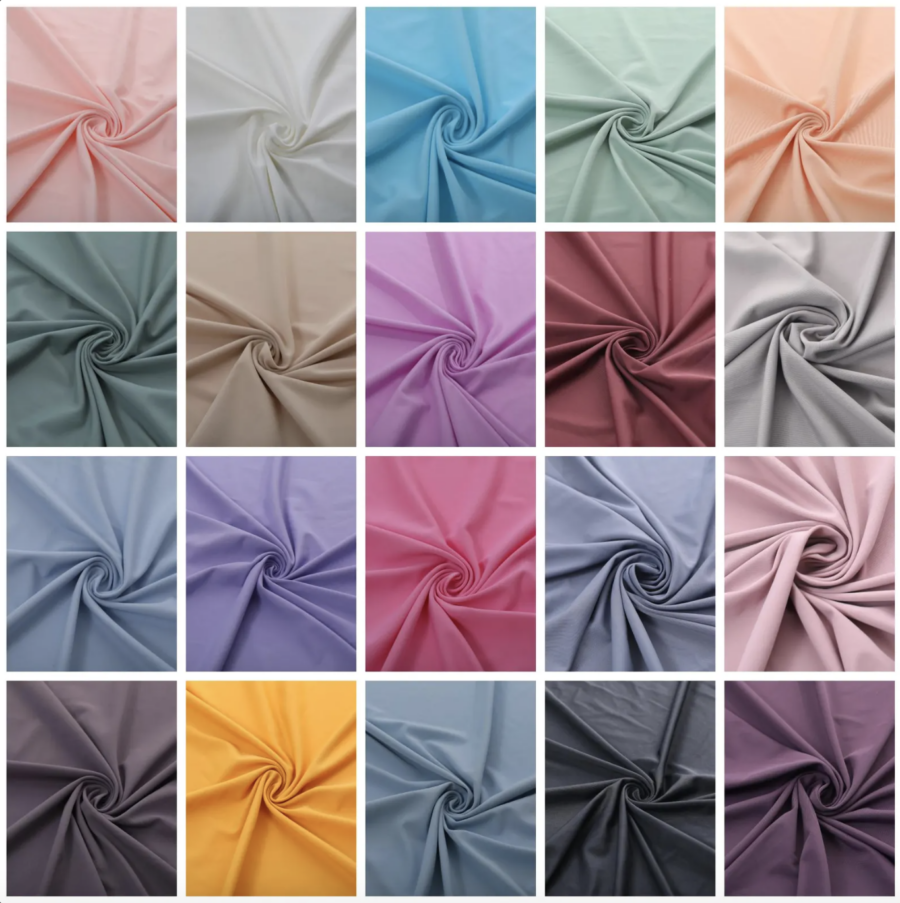
Polyester Blends

Tricot
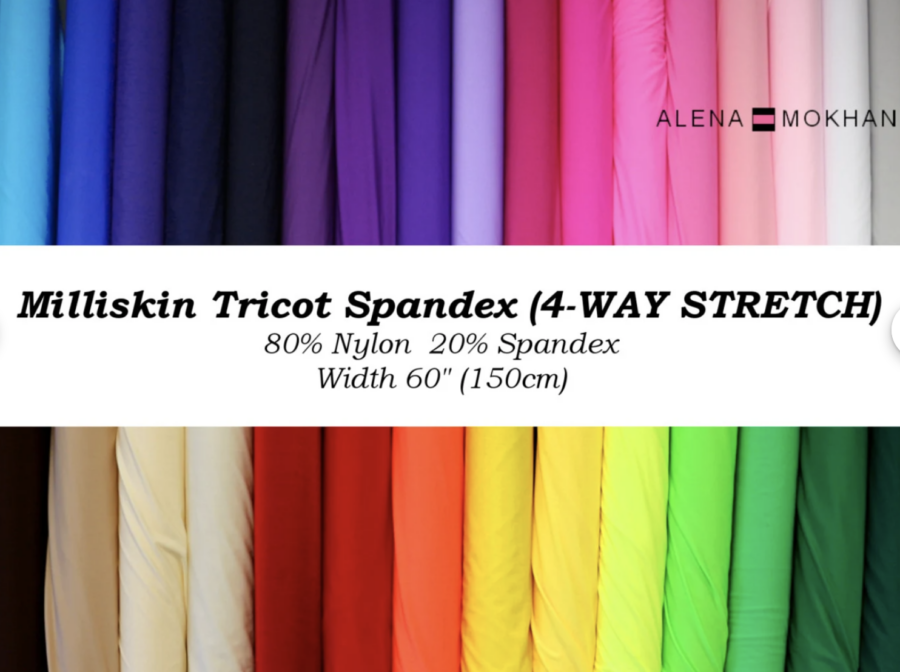
Neoprene/Scuba Knit
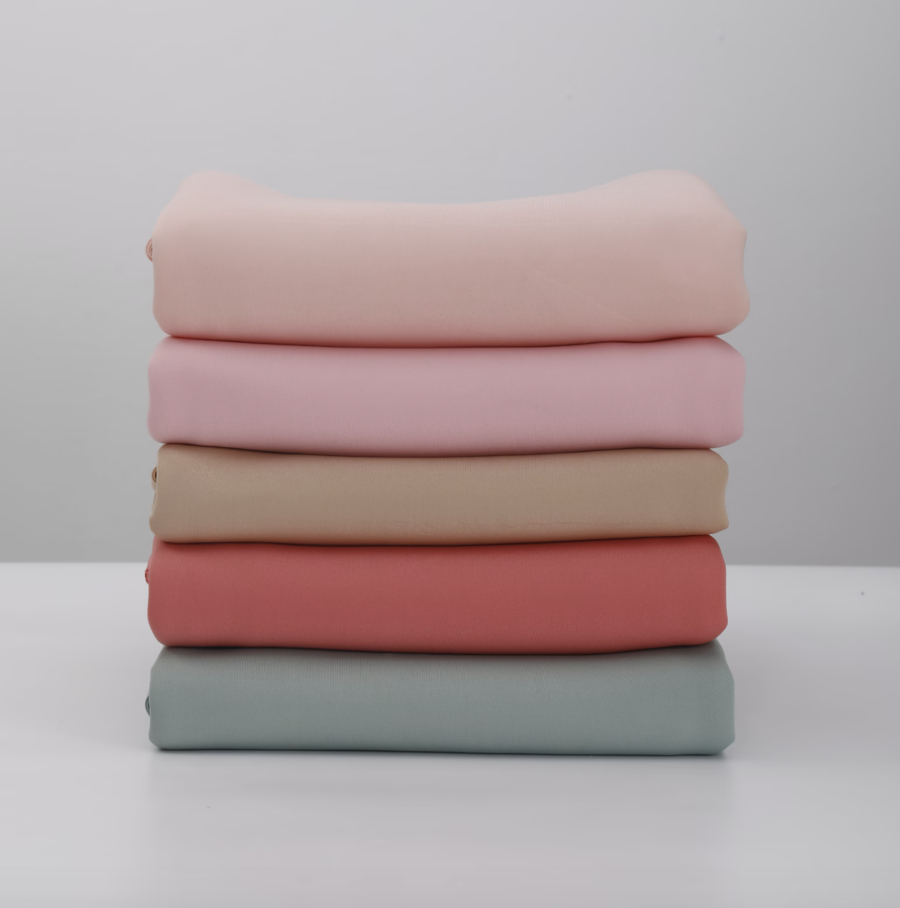
Lining Fabrics
Power Mesh
Nylon
Tricot
Conclusion – Best Fabrics for Sewing Swimwear:
As you can see swimwear fabric isn’t all that scary or crazy. If you keep in mind the different options I have listed here for you it should be pretty easy to find the right fabric. However, always keep in mind the quality so you can make sure that cute new swimsuit will be with you for many swim seasons to come!
Happy Sewing!
Learn more about Sewing Swimwear below:
88+ Plus Size Swimsuit Sewing Patterns
Top 18 Men’s Swim Suit Sewing Patterns
